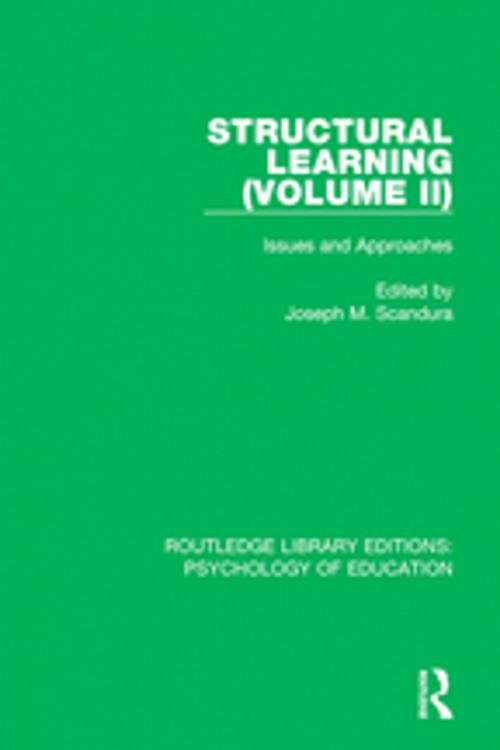Structural Learning (Volume 2)
Issues and Approaches
Nonfiction, Health & Well Being, Psychology, Cognitive Psychology| Author: | ISBN: | 9781351839402 | |
| Publisher: | Taylor and Francis | Publication: | September 13, 2017 |
| Imprint: | Routledge | Language: | English |
| Author: | |
| ISBN: | 9781351839402 |
| Publisher: | Taylor and Francis |
| Publication: | September 13, 2017 |
| Imprint: | Routledge |
| Language: | English |
Originally published in 1976, this title is an edited volume and reflects the major approaches being taken in structural learning at the time. Chapter 1 deals with the basic question of whether competence (knowledge) should be characterized in terms of rules (automata), on the one hand, or associations on the other. The bulk of Chapter 2 is devoted to a series of earlier experiments on rule learning by the editor and his associates. The two contributions in Chapter 3 deal with graph theoretical models. Piagetian models constitute the subject of Chapter 4. Chapter 5 deals with attempts to stimulate human behaviour with a computer. Chapter 6 ranges over a wide variety of competence models, with particular reference to logic and mathematics. In Chapter 7 the editor proposes a new theory of structural learning, together with some empirical results.
Originally published in 1976, this title is an edited volume and reflects the major approaches being taken in structural learning at the time. Chapter 1 deals with the basic question of whether competence (knowledge) should be characterized in terms of rules (automata), on the one hand, or associations on the other. The bulk of Chapter 2 is devoted to a series of earlier experiments on rule learning by the editor and his associates. The two contributions in Chapter 3 deal with graph theoretical models. Piagetian models constitute the subject of Chapter 4. Chapter 5 deals with attempts to stimulate human behaviour with a computer. Chapter 6 ranges over a wide variety of competence models, with particular reference to logic and mathematics. In Chapter 7 the editor proposes a new theory of structural learning, together with some empirical results.















